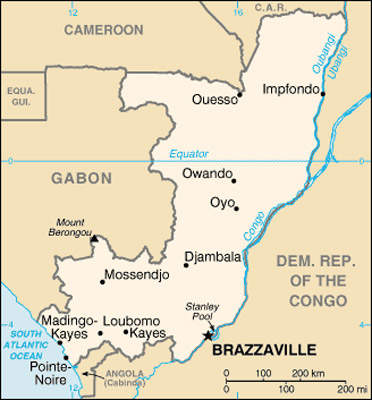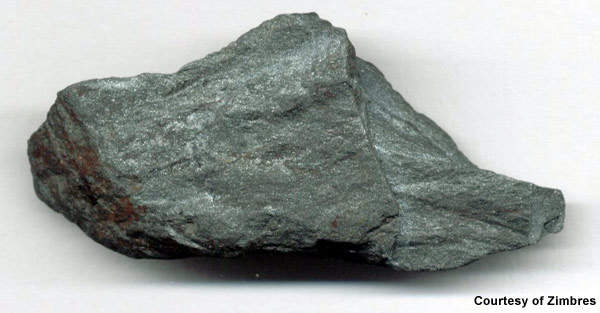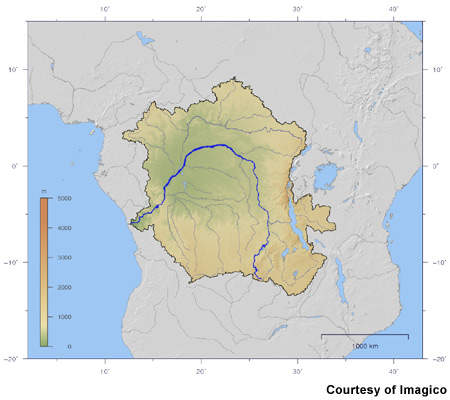The Mayoko iron ore project is located within the south-west region of the Republic of Congo (RoC). The project comprises an extensive tenement covering 1,000km² in West Africa.
Project owner African Iron (now Exxaro) owns the Mayoko exploration licence that was initially held by DMC Mining. The exploration licence was acquired by African Iron in August 2010. DMC Mining, which had held 80% of the property since December 2007, began drilling the mine in December 2009. African Iron was acquired by Exxaro in March 2012.
The Mayoko exploration permit, which was to expire in 2011, has been renewed up to April 2013. The renewed licence had a provision for renewal for two more years. The exploration permit for the project was granted in August 2013 for 25 years.
Mayoko iron ore project geology
The Mayoko iron ore project lies on the Precambrian Congo Craton of West Africa.
The area is characterised by meta-sedimentary rocks, which are more than 2,540 million years old. The rocks are highly metamorphosed almost up to granulite facies.
Iron is hosted within highly weathered iron-rich metamorphic rocks referred to as ‘Chapeau de Fer’ or hats of iron. Part of the deposit is covered by a high grade haematite-contained ferruginous crust. The crust overlays a weathered and disintegrated ferruginous quartzite zone, which consists of haematite and low-grade magnetite.
Ferruginous formations in Mayoko also include fresh ferruginous quartzites and colluvia. Colluvia are accumulated material found at the base of the slope, which results from the breaking up ferruginous quartzites.
Mayoka mine reserves
Reserves in the Mayoka mine are found along a strike length of 1,800m and a vertical extent of 170m. As of March 2014, the total indicated iron ore resources are estimated at 177Mt, whereas inferred resources are estimated at 577Mt graded at 36% Fe.
Mineralisation
Mineralisation occurs in two geological prospects at Mt Lekoumou-Mt Mipoundi and Mt Lekoumou South. The Mt Lekoumou-Mt Mipoundi trend is defined over a strike length of 7km. At this zone, iron mineralisation occurs as open towards the north-east extent of the strike. Along the entire length of the strike, mineralisation takes place as open at depth.
The Mt Lekoumou zone is found along a strike length of 1.5km, which is between 20m and 50m deep. Mineral resources in this zone consist of high-grade cap, detrital and high-quality itabirite ores.
Mayoka mine exploration
The exploration of the project zone included trenching and a geophysical survey. Along the Mt Mipoundi zone, 18 trenches for a linear advance of more than 690m have been completed. Results revealed evidences of in-situ and detrital iron mineralisation along this zone.
Recent trending and shallow diamond drilling conducted in the past for up to 38 holes also revealed the occurrence of supergene haematite mineralisation graded at 50% to 65% Fe at depths between 10m and 40m from the surface.
A high-resolution airborne geophysical survey was completed in July 2009. Conducted across a 220km² area in the central region of the Mayoko project area, the survey revealed six drill targets covering 0.7t to one billion tons of iron ore.
A similar survey conducted on the remaining 780km² in 2010 increased the exploration target to 1.6-2.6 billion tonnes of ore graded at 30%-65% Fe. Between 320Mt and 520Mt of target ore graded from 40% and 65% of Fe corresponds to potential and beneficial DSO.
A 30,000m oxide resource definition drilling programme was started in February 2011 at Mt Lekoumou and Mt Mipoundi to increase the volume of the existing haematite, DSO, beneficiable DSO and inferred resource.
Results of the first batch drill confirmed the DSO grade of 50%-60% Fe and beneficial DSO at 40%-45%.
The government of the Republic of Congo and Exxaro signed the Mayoko mining exploitation convention along with rail and port framework agreements for the development of 12Mtpa Mayoko mine in January 2014. A concept study on the revised project was completed in June 2014.
Mayoka diamond drilling programme
A diamond drill programme to measure the characteristics of ores found during exploration, including sizes and grades, was conducted at the site.
Stage I of the drilling programme, which was completed in April 2010, included 18 drills along the 7km strike of the Mt Lekoumou-Mipoundi zones. The holes were drilled at 1.5km-spaced traverses at depths between 200m and 400m. Stage I confirmed the existing resource and demonstrated banded iron formation (BIF) in lenses between 50m and 200m thick over a strike length of 7km. The programme was concluded with the drilling of 20 diamond and 27 reverse circulation holes by 2011.
Ore processing
A haematite and magnetite plant will be required to process the ore. To access the magnetite, a haematite cap will have to be mined first.
The proposed method for processing haematite includes a two-stage crushing circuit that will deliver lump and fines. An 11mt per annum Stage 1B haematite plant is required for the process.
Mayoko mine transport
The Mayoko project is easily accessible with sufficient railways, roads, water supply and ports in close proximity. The project is located within a distance of 2.2km from Pointe Noire rail line, which links to the coast of Pointe Noire.
An agreement was signed between DMC and Chemin de Fer Congo-Ocean (CFCO) in April 2009 to provide rail access from Mayoko to Pointe Noire rail line.
The Port Authority of Pointe Noire (PAPN) signed an agreement with DMC in June 2009 to export iron ore from the Mayoko mine site to international markets.






